Coastal municipalities send environmental problems off to Albania, ...however, sometimes the sewage sludge ends up in the nearby sea
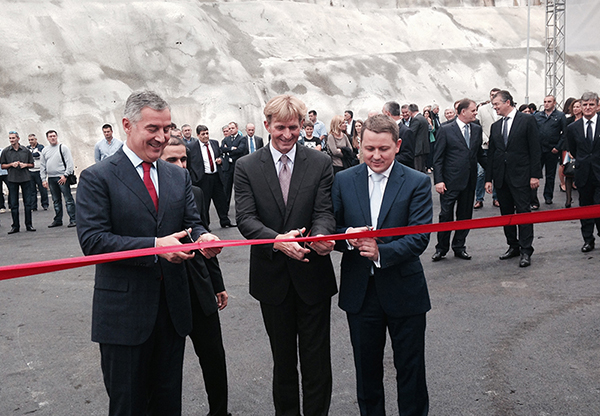
Even though more than 70m € have been invested in the wastewater treatment the applied technology is still inadequate and without sludge disposal plans. The local authorities find it easier to ship the sludge off to Albania at the expense of tax payers’ money which goes into hundreds of thousands of Euros. The city councils of Kotor, Tivat and Budva have the same partner in this business, a national of Albania whose company is registered in Montenegro.
The Montenegrin Investigative Centre (CIN-CG) found in the official statistics that some 12,000 tonnes of sludge have been exported since last year. The sewage sludge is a leftover after wastewater treatment which is now conducted in the newly built facilities in Budva, Kotor and Tivat. The similar facility in Herceg Novi is still under construction and with low treatment capacity hence the waste is stored in the facility’s disposal reservoirs. There are only two proper waste dumps (in Podgorica and Bar) but the sewage sludge is not listed in the issued licence.
The authorities in Budva, Kotor and Tivat have the same partner, the Montelea company registered in Montenegro. The sole founder and executive is Florian Borshi, an Albanian national from Shkodra. He charges his shipping services 65€ per tonne. The CIN-CG reporters were unable to reach out to him as the address stated in the business registry (the Celebic Business Centre- CBC in Podgorica) is invalid with no plaques, mailbox or other signs there. Borsha’s company is unheard of by the other occupants of the CBC.
As CIN-CG finds out, the sludge exported to Albania is not further treated but ends up in a waste dump. The aforesaid authorities have no clue about the whereabouts of the final waste dump.
The sludge export from the facility in Budva has exceeded 10,000 tonnes since the last year while the facility that treats Kotor’s and Tivat’s sewage wastewater has accumulated 6,000 tonnes ready to be shipped off. However, the customs records do not corroborate the local departments data hence it’s possible that a part of the sewage sludge ends up in the hinterland’s crevices or in the nearby sea.
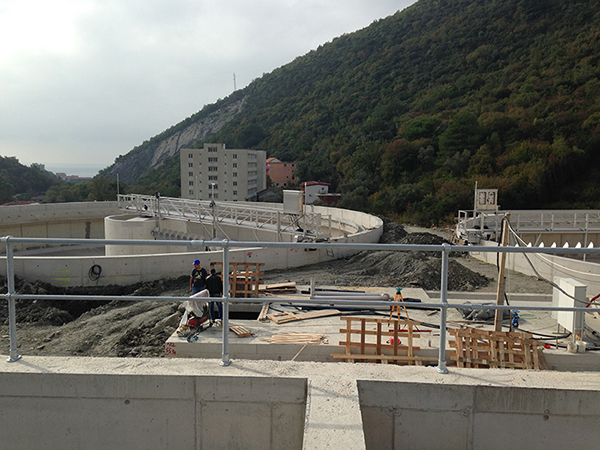
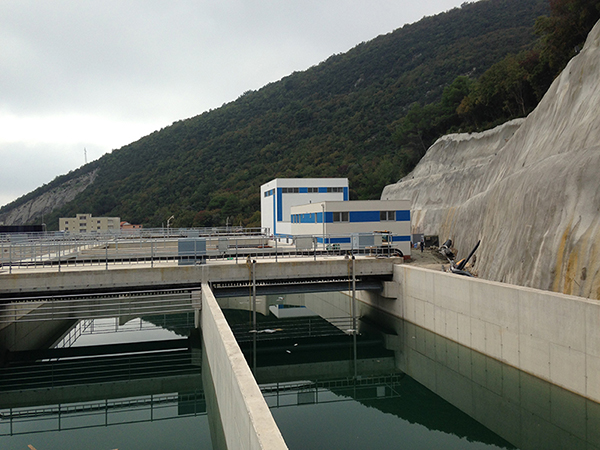
The Ministry of Sustainable Development and Tourism (MORT) replied CIN-CG that it had no information about illicit disposals of the sewage sludge in the rocky hinterland’s sinkholes. Cuca and Krivosija are areas with many crevices and pits and thus rumoured as waste disposal sites whereof the Ministry will “most certainly inform the inspectorate“.
The ministry reminds on regulations whereby “ the waste producers can either treat the waste autonomously or entrust the same to dealers or entities which gather or treat the waste“. Thus it is clear, according to the ministry, that the “businesses which operate wastewater facilities are obliged to take care of the waste“ .
The Budva City Council admits in its correspondence with CIN-CG that no waste treatment facility in Montenegro is technologically capable to process all of the waste. Hence the so called sludge treatment is not laid out. Instead, an arrangement was made in 2017 with the company of Florian Borsha to remove 4,100 tonnes of sludge to Albania at the cost of 64.5 €/tonne incl. VAT. Thus 264,441.80€ were paid last year. In 2018 another 6,000 tonnes will be carried off at the cost of 65.95 €/tonne (due to VAT increase) and 395,670€ in total.
On the other hand Budva’s city council has fought a long legal battle against the WTE Group in Germany which demands a payment of 58.5m€ for the wastewater plant construction as agreed in the contract. The local authorities refuse to pay for the phase 2 and 3 of the aforesaid project and claim that the construction hasn’t even been started, let alone completed. Dr Joze Duhovnik, a Slovenian expert hired by the Budva authorities claims in his extensive study that only 69.2% of the entire facility has been completed as laid out in the investment agreement. The project was meant to facilitate a wastewater treatment for a settlement of 130,000 inhabitants. However, the project is accompanied by corruption allegations (and is currently investigated) since one of the WTE managers reportedly admitted a payment of 3m€ to a person in the earlier local government whose name is withheld for the time being.
According to Duhovnik’s study only the central unit on Vjestica Hill has operational licence while ten pump stations are still in test mode. The project envisages the construction of wastewater treatment units in Buljarice and Petrovac and secondary sewage network. The piled up sewage sludge on Vjestica Hill is often a problem on rainy weather as it spreads out an unbearable stench down to the beach resorts and hotels.
The sludge from the joint Tivat-Kotor wastewater treatment facility was exported to Albania in accordance with the one year contract signed with the Montelea Co. The deal is nearly 40,000€ worth for the disposal of 500 tonnes. Anyway, it seems that not all 500t crossed the border as the customs records declare less than half of the amount. The water utility company in Tivat has no information as to what happened with the rest of the sludge and whether it was dumped somewhere outside of the facility.
The Montelea Company used to load the sludge near the Montepranzo Estate just opposite the Tivat Airport. First the sludge was dumped on the lawn and then encased in big containers which the Montelea’s lorries carried off to Albania. That was discovered in early October last year when the airport personnel and the passengers started complaining about the unbearable stench that was coming their way. After several days the airport’s security had enough of the stench no and took beyond the airport’s parametres. They discovered the mounds of sludge on the land of the Tivat Utility Services which thought it convenient to reload the sludge there for Albania shipments. The operation had to be aborted as it became public and awfully smelly.
The German WTE runs the joint Tivat-Kotor treatment facility since its opening in July 2016. The WTE Group and its daughter company in Budva had also constructed the same facility. The Germans were supposed to hand over the facility by 31 Aug to the joint Tivat-Kotor waste treatment company. Nevertheless the handover was delayed over the company’s registration procedure and the training of new staff (by the WTE Group). The cities reckon that the Germans are obliged to handle the sewage sludge discharged in the plant’s three reservoirs until the facility is handed over. Anyway, according to reliable sources, the disposal problem was ’solved’ a couple of times by direct discharge into the sea in the Bay of Traste since the ’reload station’ opposite the airport had to be shut down.
On one occasion a big dark stain was spotted in the sea from the nearby Lustica Bay high-end resort. The tourists made photos and reported it. Even the Montenegrin Environmental Protection Agency acknowledge that ’something strange’ was going on in terms of leakage from the more than 10m € worth facility. The executive of the joint Tivat-Kotor Wastewater Treatment Company and its only staff at the time, Srecko Tripovic wouldn’t talk to CIN-CG about the aforesaid problems.




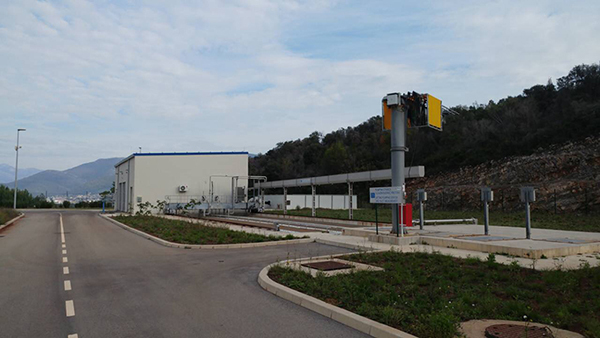










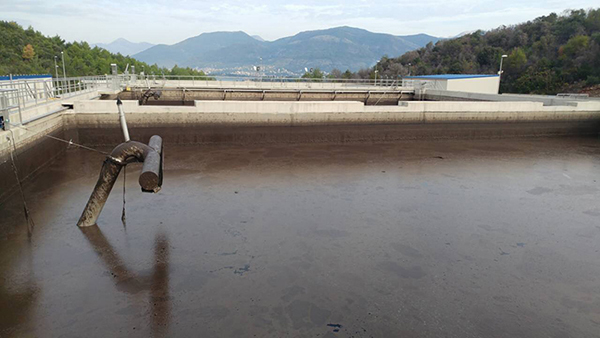
The WTE delivered two open top containers and a special carrier vehicle for the sludge transportation. However, the vehicle is still not in service as it lacks licence plates for some reason. Hence it cannot deliver the sludge to Vjestica Hill near Budva which is meant to be a hub for further shipments to Albania by another company. We are told, off the record though, that the Kotor Water Utility Services mulls a purchase of two special closed containers so they can successively drive off the accumulated sludge out of the facility in Krtola.
The Ministry of Sustainable Development and Tourism responds that Montenegro’s legislation is some 95% in harmony with the EU legislation and that a lot has been done to meet the Sea Coast Master Plan requirements in terms of wastewater treatment and drainage including the construction of 150km of sewage network and three waste treatment plants.
Montenegro’s northernmost coastal city of Herceg Novi is still without hassle with the sludge according to Jelena Djakonovic, acting head of the local water utility firm. The treatment facility in nearby Meljine is still in testing phase. The work on the sewers hasn’t been finished yet. The treatment plant in Herceg Novi is built by the Turkish MASS/Gintas consortium while another Turkish company- Celtikcioglu constructs the sewers.
The sustainable development ministry points out that the stabilised sewage sludge “is not harmful and can be used in agriculture after its proper treatment...it’s used in parks and other green areas, in re-cultivation of soil, foresting, as an insulation layer on the waste dumps and as renewable energy source through incineration...“.
Mojkovac treatment plant is appealed to as a good model copied from Denmark. Furthermore the Podgorica City Council planned a new plant with the thermal treatment of the sewage sludge. The German KfW Bank helped the case study for coastal municipalities where new and more advanced solutions will be implemented. The ministry further says that the law makes provisions for temporary sludge disposal in the interim period without giving us further details on what it means.
Experts are divided over the sewage sludge incineration because of air pollution and ash residue which thus becomes hazardous. Besides, the waste incineration is not popular in the EU. On the other hand, the local authorities have received a lot of bids from various companies and experts on how to solve the issue.
In the meantime “Vodacom” has developed an application model of the partly dried sludge from the Tivat-Kotor treatment plant which could be used to re-cultivate soil on two former waste dumps in Sinjarevo and Lovina. The investment will cost slightly over a million €. The KfW Bank would finance the project. The Tivat City Council endorsed it and now it awaits the same approval in Kotor.
National Customs Office- exports are legal
The Customs Office told CIN-CG that nearly 12 tonnes of the stabilised sludge (which can be used as a fertiliser) had been exported from Montenegro from early 2016 until Oct 2018.
“The Customs Office doesn’t keep export/import records for each municipality but it has them on the national level. The aforesaid material was exported to Albania indeed. Now pursuant to the law the information on particular physical and legal entities in the customs declarations cannot be shared without approval of all the parties involved“. The ministry further claims that such matter is in accordance with international regulations. As such it is not considered hazardous and thus has no export obstacles.
Siniša LUKOVIĆ


